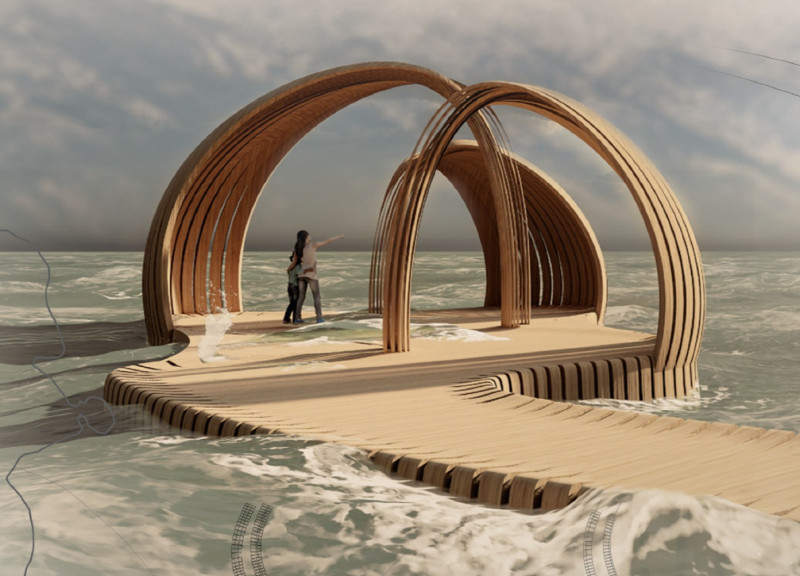5 key facts about this project
The pavilion is located on the shores of Flathead Lake in Somers, Montana, intended as a multifunctional space that deeply connects with its natural surroundings. The design is focused on engaging with the landscape and addressing the unique challenges posed by seasonal changes in water levels and weather patterns. The aim is to create an experience that allows users to immerse themselves in nature while ensuring the structure remains safe and functional throughout the year.
Design Response
The form of the pavilion is thoughtfully shaped to manage the impacts of wave action and snow accumulation. It prompts users to remain aware of the surrounding water, particularly in summer months when the risk of splashes and waves is heightened. This design approach affects both the layout and usability of the pavilion, making it suitable for a variety of activities while maintaining safety.
Material Choices
Local materials are integral to the construction, including Douglas fir and larch. These types of wood are valued for their strength and light weight, contributing to the structure’s durability and offering a sense of connection to the local environment. Cross-laminated timber sourced from the nearby Flathead Valley forms the upper levels, providing stability and adaptability to climate challenges while enhancing the overall aesthetic appeal.
Structural Innovations
The pavilion contains thicker and wider members near the waterline to counteract potential decay from constant exposure to water. Curved shapes at the waterline redirect wave energy towards designated blowholes, helping to protect the structure. Additionally, the design incorporates structural wood piles driven into the lakebed, creating a strong foundation that supports the entire pavilion and increases its resilience to natural forces.
During summer, visitors can reach the pavilion by kayak, while in winter, the lower levels offer sheltered views that showcase the changing landscape. The careful arrangement of spaces invites interaction between the built form and the watery environment, making the design responsive to the characteristics of Flathead Lake.




















































